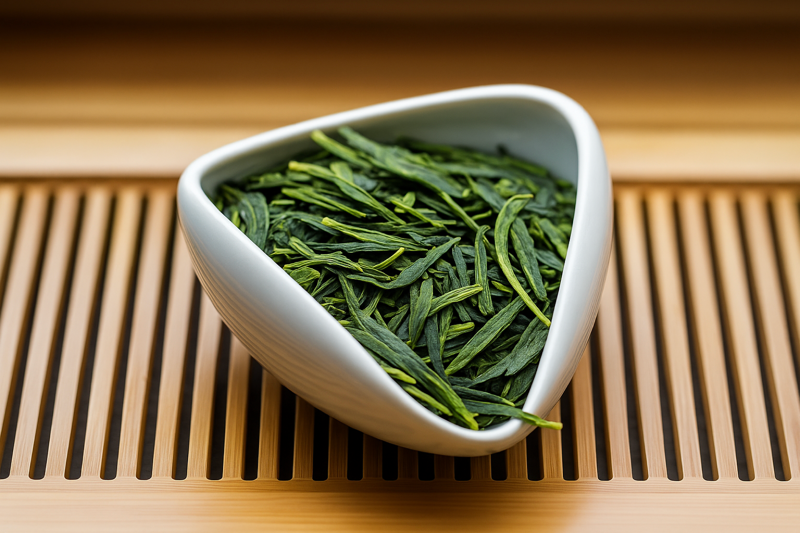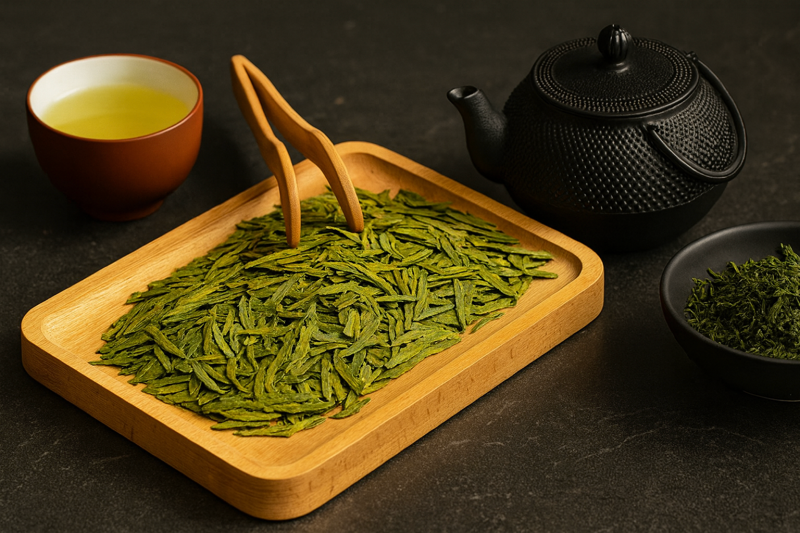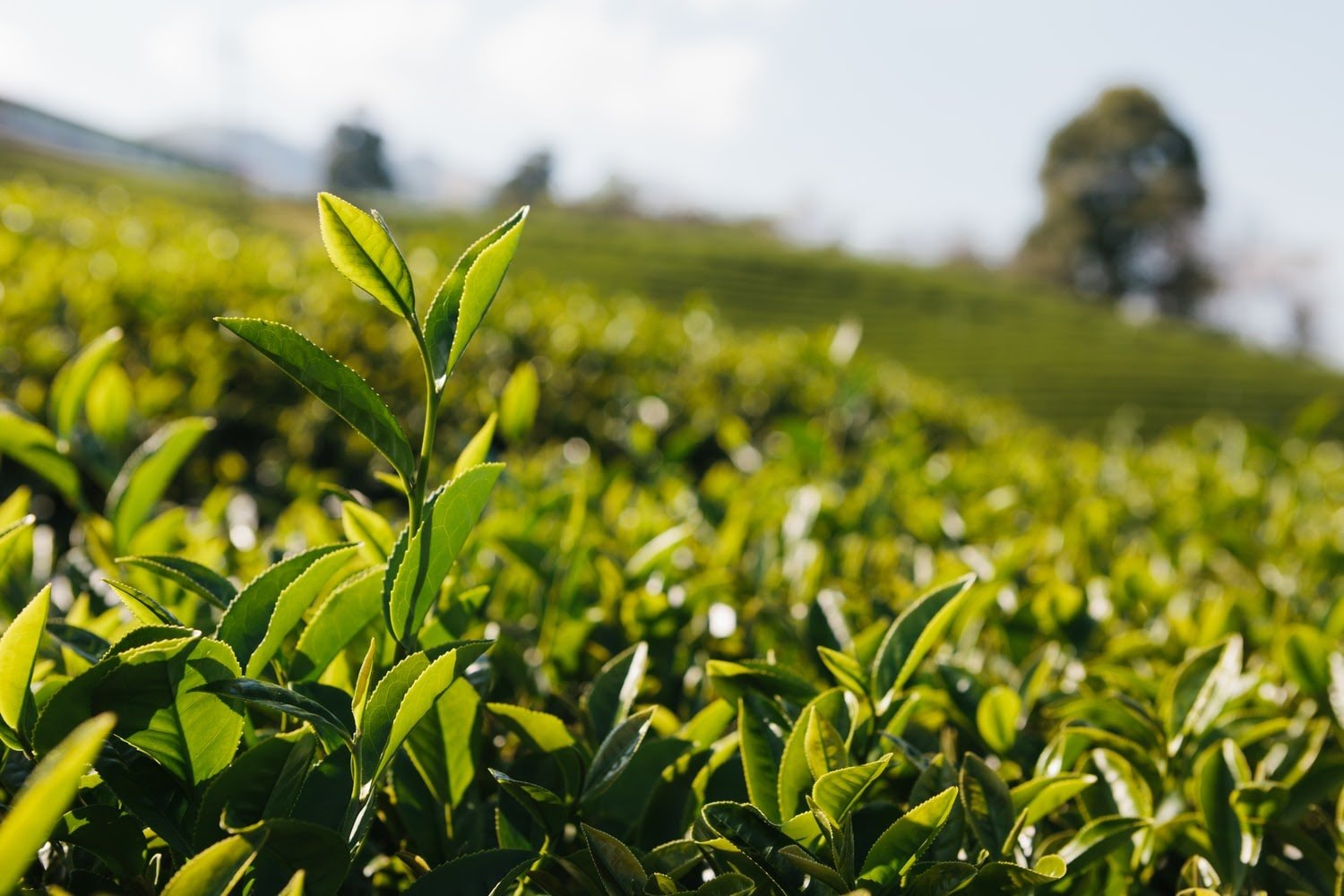Longjing (Dragon Well)
Flat, jade-green leaves with chestnut sweetness and elegant freshness.
- Category: Pan-fired green tea (Camellia sinensis)
- Origin: China — West Lake area, Hangzhou, Zhejiang Province.
- Harvest: Early spring, especially pre-Qingming (before April 5th), considered the finest.
- Grade: Shi Feng Longjing; West Lake Longjing; Zhejiang Longjing



Tasting Profile
Brewing Guide
- Tea-to-water ratio~4–5 g leaves per 200 ml water.
- Water temperature75–80 °C (167–176 °F) to avoid bitterness.
- Steeping timeFirst infusion: 1–2 minutes; subsequent infusions: 30–60 seconds.
- Infusions2–3 infusions; first highlights chestnut sweetness, later infusions lighter and floral.
Background & Story
Longjing, known in English as Dragon Well, is perhaps the most celebrated of all Chinese green teas. Originating in the West Lake region of Hangzhou, Zhejiang Province, it has been revered for centuries for its exquisite appearance, refined flavor, and cultural importance. Its flat, sword-shaped leaves, golden-green infusion, and chestnut-like sweetness have made Longjing a benchmark of quality and elegance in Chinese tea culture.
The history of Longjing stretches back over a thousand years, with records of its cultivation during the Tang dynasty and recognition during the Song dynasty. It rose to prominence during the Qing dynasty when Emperor Qianlong personally visited the tea fields of Hangzhou and praised the tea for its exceptional quality. Since then, Longjing has been listed among China’s “Ten Famous Teas” and continues to be prized both domestically and abroad.
What sets Longjing apart is its unique processing method. Fresh spring leaves are carefully hand-picked, typically before the Qingming Festival (early April). The best “pre-Qingming” harvest is highly sought after for its tenderness and complexity. After picking, the leaves are pan-fired by hand in woks, a process that halts oxidation and shapes them into their characteristic flat, smooth form. This meticulous hand pressing and roasting brings out the tea’s signature nutty aroma, vegetal freshness, and lingering sweetness.
Authenticity is a critical part of Longjing’s identity. True West Lake Longjing, especially from Shi Feng (Lion Peak), is highly valued and often commands premium prices. Broader Zhejiang Longjing shares similar characteristics but is more widely available.
Culturally, Longjing has long been associated with refinement, scholarship, and hospitality. It is served to honor guests and is often presented as a gift. Today, it remains a symbol of Hangzhou’s heritage and one of China’s greatest contributions to global tea culture, embodying both tradition and timeless elegance in every cup.
Benefits
- High in catechins and polyphenols that provide strong antioxidant protection
- Supports heart health by promoting circulation and healthy cholesterol levels
- Contains L-theanine and moderate caffeine for calm, focused alertness
- May aid weight management by boosting metabolism naturally
- Rich in vitamins and minerals that help strengthen immunity and overall vitality
Serving Suggestions
Pairings
- Light seafood dishes such as shrimp, crab, or steamed white fish
- Mildly seasoned stir-fried vegetables like bok choy or snow peas
- Simple rice or noodle dishes with delicate seasoning
- Dim sum items such as dumplings or spring rolls
- Lightly sweet pastries or sponge cakes to complement its chestnut notes
Teaware
- Gaiwan (traditional Chinese lidded brewing cup)
- Glass teapot or tall glass (to admire the leaf unfurling)
- Fairness pitcher (cha hai) for even pouring
Nutrition Facts
Serving Size: 1 cup brewed Longjing (240 ml)
| Nutrient | Amount per Serving | % Daily Value* |
|---|---|---|
| Calories | 0 | 0% |
| Total Fat | 0 g | 0% |
| Sodium | 0 mg | 0% |
| Total Carbohydrates | 0 g | 0% |
| Protein | 0 g | 0% |
| Vitamin C | 3–5 mg | 4–7% |
| Vitamin A (beta-carotene) | Trace | <1% |
| Calcium | 2–4 mg | <1% |
| Potassium | 20–40 mg | <1% |
| Magnesium | 2–4 mg | 1% |
| Caffeine | 20–30 mg | — |
| L-theanine | 6–10 mg | — |
| Catechins (EGCG) | 30–50 mg | — |
| Polyphenols | 60–80 mg | — |
| Chlorophyll | Present (moderate) | — |
**Percent Daily Values are based on a 2,000 calorie diet.
† Functional compounds such as caffeine, L-theanine, catechins, polyphenols, and chlorophyll do not have established %DV but contribute significantly to Longjing’s health benefits.